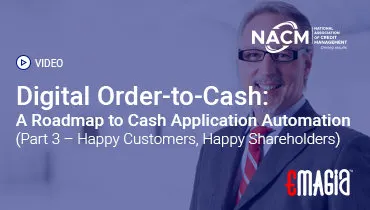Introduction to Remittance Notices
A remittance notice, also known as remittance advice, is a document sent by a payer to a supplier or vendor to inform them of a payment made for goods or services. It typically includes details such as the payer’s name, the amount paid, invoice numbers being settled, and the date of payment. This notice serves as a confirmation of payment and aids in the reconciliation of accounts receivable for the supplier.
What is a Remittance Notice?
A remittance notice is a communication tool between a payer and a recipient, detailing payments made and providing crucial transaction information. It typically accompanies a payment, such as a check or bank transfer, and includes specifics like the amount paid, date of payment, and corresponding invoice numbers. This enables both the payer and the payee to keep accurate records of transactions and ensures that payments are matched correctly to invoices, simplifying accounting processes for businesses.
Importance of Remittance Notices in Financial Transactions
Remittance notices play a vital role in financial transactions by:
- Ensuring Accurate Record-Keeping: They provide a clear record of payments made, aiding in accurate bookkeeping.
- Facilitating Reconciliation: Suppliers can match payments to outstanding invoices, reducing discrepancies.
- Enhancing Communication: They serve as a formal notification of payment, improving transparency between parties.
- Supporting Audit Trails: Remittance notices contribute to a comprehensive audit trail, essential for financial reviews.
Key Components of a Remittance Notice
A standard remittance notice includes:
- Payer Information: Name and contact details of the entity making the payment.
- Payee Information: Name and contact details of the recipient.
- Payment Details: Amount paid, payment method, and date of payment.
- Invoice References: List of invoice numbers and amounts being settled.
- Additional Notes: Any relevant comments or instructions related to the payment.
Types of Remittance Notices
Remittance notices can be categorized based on their format and delivery method:
- Paper-Based Remittance Notices: Traditional printed documents sent via mail.
- Electronic Remittance Advice (ERA): Digital versions sent through email or electronic data interchange (EDI) systems.
- Online Portals: Accessed through secure supplier portals, allowing real-time viewing and downloading.
Remittance Notice vs. Payment Advice
While often used interchangeably, there is a subtle distinction:
- Remittance Notice: Focuses on detailing the payment made, including invoice references and amounts.
- Payment Advice: May include broader information about the payment process, such as payment schedules or methods.
Best Practices for Sending and Receiving Remittance Notices
- Timeliness: Send remittance notices promptly after making a payment to facilitate swift reconciliation.
- Accuracy: Ensure all details, especially invoice numbers and amounts, are correct to avoid confusion.
- Consistency: Use standardized templates to maintain uniformity and professionalism.
- Secure Delivery: Utilize secure channels, especially for electronic notices, to protect sensitive information.
How Emagia Enhances Remittance Notice Management
Emagia offers advanced solutions to streamline the management of remittance notices:
- Automated Generation: Automatically create remittance notices upon payment processing, reducing manual effort.
- Digital Delivery: Send electronic remittance advice through secure channels, ensuring timely and safe delivery.
- Integration with ERP Systems: Seamlessly integrate with existing enterprise resource planning systems for cohesive financial operations.
- Analytics and Reporting: Access detailed reports and analytics to monitor payment trends and reconciliation efficiency.
Frequently Asked Questions (FAQs)
What is the purpose of a remittance notice?
A remittance notice informs the supplier that a payment has been made, detailing the invoices settled, which aids in accurate and timely reconciliation.
Is a remittance notice mandatory?
While not legally required, sending a remittance notice is considered best practice as it enhances transparency and reduces the likelihood of payment disputes.
Can remittance notices be sent electronically?
Yes, electronic remittance advice (ERA) is common and often preferred for its speed and efficiency.
How does a remittance notice differ from a receipt?
A remittance notice is sent by the payer to inform the payee of a payment made, whereas a receipt is issued by the payee to acknowledge receipt of payment.
What information should be included in a remittance notice?
Key details include payer and payee information, payment amount, date, method, and references to the invoices being paid.
By understanding and effectively utilizing remittance notices, businesses can enhance their financial operations, ensure accurate record-keeping, and maintain strong supplier relationships.



